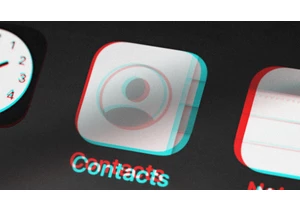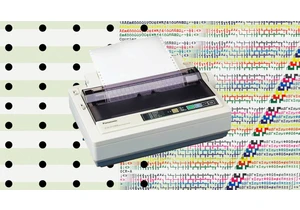Celebrities go to the Met Gala to serve looks, not cease-and-desist letters. Lately, though, it seems like they may have to start doing both—thanks to generative AI.
When Katy Perry’s mother texted her during this year’s festivities—to congratulate her on the gorgeous, high-floral gown she’d seen making the rounds online—the pop star had to inform her that the person in the photo was not, in fact, Perry. It was an AI-generated version of her, shopped into the foreground of a previous Met Gala carpet. This incident doesn’t necessarily prove that AI has gotten so photorealistic it could fool one’s own mother, but it’s passable if you were focused on the gown. (The AI Katy Perry looks like an animorph that stopped changing midway between Perry and Megan Fox.) It does, however, suggest that the Met Gala has become the perfect cultural event for regularly duping observers with deepfakes.
Katy Perry. That’s it. #MetGala pic.twitter.com/OT51H6wJ9i
— javi (@jxries) May 6, 2024
Even more so than the Oscars red carpet, the Met Gala truly is the Super Bowl of Fashion. Held on the first Monday of May, the event’s official mission is to raise funds for the Metropolitan Museum of Art’s Costume Institute. But, come on, the real reason for the season is for celebrities with diamond-cut cheekbones one-upping each other’s unruly, outrageous, and occasionally abrasive aesthetics. Bjork’s infamous swan dress, which practically scandalized the Oscars in 2001, would barely crack the top-five boldest looks at any given Met Gala these days. That’s why the event is now so ripe for digital trickery. When over-the-top fashion is simply the standard, nearly any alien concoction Midjourney conjures will be met with credulity.
What wild outfit would you not believe Doja Cat rocked at the Met Gala?
Making deepfakes even more tempting for tricksters is the confusion that comes with attendees occasionally changing looks throughout the night. Was Zendaya’s second look you spotted online a forgery? Or did she simply do a quickie costume change? (Yes.) AI manipulators are counting on these details being hard to track.
@urcoolmomfriend 2 outfits is crazy, but 2 makeup looks is BONKERS #greenscreen #zendaya #metgala #metgala2024
♬ original sound – 🫧 claire 🫧
AI-generated Met Gala looks have gained traction online before, as with the fake Khloe Kardashian latte look from last year. At Monday night’s event, though, the abundance of manipulated imagery appears to have risen in step with the ease of access to, and increased capabilities of, visual AI generators like DALL-E 3. This year’s theme may have been “Garden of Time” (which sounds like the name of a great lost Led Zeppelin song), but for those following along at home, the theme appeared to be AI.
Met Gala AI fakeries tend to fall into three separate categories.
The silly fakes
The first one is purely for fun. These are the obviously fake, clearly labeled efforts, made to entertain. They disregard the official Gala theme for one of their creator’s own making, such as Lord of the Rings or world leaders.
Nobody coming across TikToks from last year showing supervillains and slasher movie characters on the red carpet is thinking they’re real. Creations like these are essentially an extension of animated mockups, like this image posted to X of the Family Guy “cast” at this year’s Gala—and just about as believable.
peter & lois have just arrived at the #metgala pic.twitter.com/3uTAMkvDsQ
— Family Guy (@FamilyGuyonFOX) May 6, 2024
The fashion fakes
The second category belongs to imaginative fashionistas who want to show off what they might do as designers, with the assistance of AI. These folks tend to clearly label their efforts as well. It’s like designing dresses for celebrity-shaped digital Barbies for an audience that knows what they’re taking in.
@gifts.of.the.gods These are created with midjourney ai. #highfashion #fashion #gigihadid #bellahadid #luxurious #metgala #kimkardashian #aiart #midjourney
♬ goth sidewalks and skeletons – daydream
The pernicious fakes
What’s hardest to spot, however, is the third category of Met Gala digital fakes: the unlabeled efforts designed by chaos-goblins specifically to create mass confusion. These are the images that spread far and wide, causing celebrities to have to dispatch emergency social media messaging to dispel rumors. In addition to the AI-generated image of Perry—who had more than one viral digital ringer at this year’s Gala—there were well-circulated deepfakes of Billie Eilish, Rihanna, and others.
Although getting tricked into sharing a fake image of a songstress dressed like a hedgerow is far less dangerous than spreading one of the President, nobody likes to feel gullible. After the event, OpenAI announced it would be releasing a “deepfake detector” to disinformation researchers, which actually puts it one step closer toward the hands of the average citizen who enjoys sharing flouncy gowns online with total impunity. Giving the public tools to avoid getting duped seems like the only practical solution, given that fooling folks with AI doesn’t seem close to falling out of fashion.
Zaloguj się, aby dodać komentarz
Inne posty w tej grupie

Despite ample evidence to the contrary, about one-third of U.S. voters still believe the 2020 e

This story first appeared in Advisorator, Jared’s weekly tech advice newsletter. Sign up for Jared’s

Effective use of AI technologies is this decade’s golden opportunity for companies, large and small. But as every software vendor claims to be “powered by AI,” “AI-ready,” or simply just “AI” R


Elon Musk’s AI startup xAI raised $6 billion in series B funding,


Excerpted from The Chinese Computer: A Global History of the Information Age, by Thomas S. Mullaney. Published by The MIT Press. Copyright © 2024 MIT. All rights reserved.
